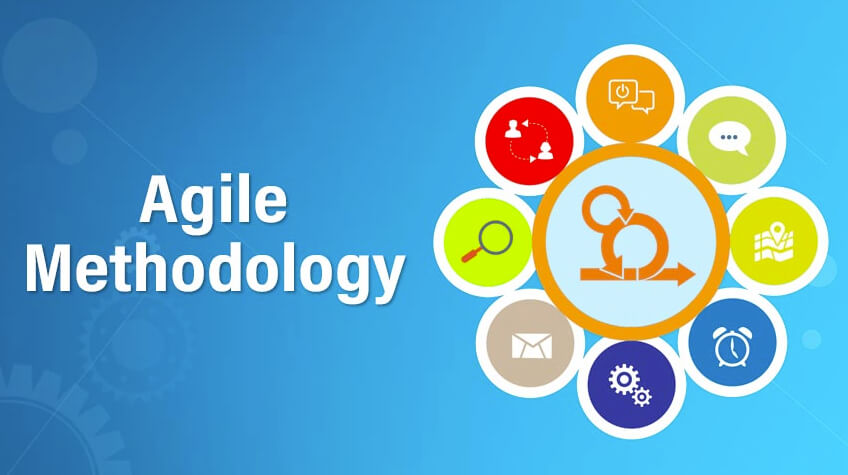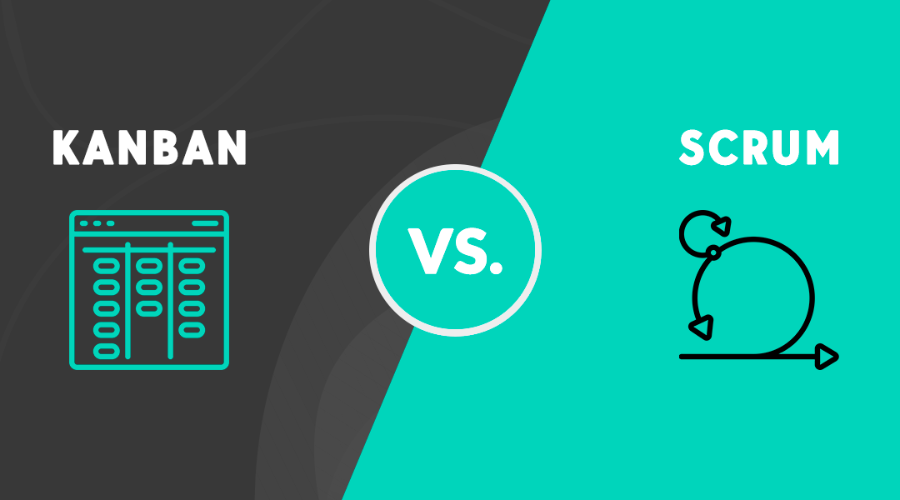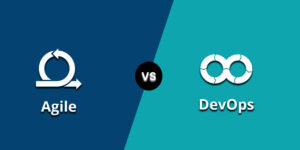
If you’re new to software development, it can be overwhelming to understand where to commence. You may have heard that Agile is the best way to develop software, but what does it mean? What tools should your team use? These are all questions that any company faces when they decide to adopt an agile methodology.
In this article, we’ll explore: ‘what is agile methodology. Modern software development explained’ and how you can use it in your development process for better results.
What is agile methodology?
The Agile methodology is a set of principles and practices for software development. It’s different from traditional methods in that it focuses on adapting to change rather than following pre-set rules or processes.
The term “agile” was coined by Ken Schwaber and Mike Beedle at Red Hat Software in 2001 when they published the first version of their manifesto, “Agile Manifesto: Principles for Developing High-Performance Software,” which outlined guidelines for building high-quality software. The manifesto defined four core values: customer collaboration, responding to change, working iteratively, and improving through feedback cycles.
In 2004, at the first Agile Conference held in London (England), 25 attendees signed up as charter members who believed that agile methods would improve quality, productivity, innovation, and morale worldwide.
The idea that software can be developed methodically and process-oriented is relatively new
The idea that software can be developed methodically and process-oriented is relatively new. Before the 1990s, most companies used waterfall development and wrote their software from scratch whenever needed. With agile methodology, you use an iterative approach to build your product or service from start to finish—you don’t start with an entire project at once; instead, you break down each part of your project into smaller pieces and then work on them simultaneously over time until they’re completed.
Many companies have adopted agile development because it’s effective for building quality products faster than traditional methods allow for: agile teams can move through multiple iterations of design and testing quickly compared to other approaches, which require more planning up front (and thus take longer). Additionally, working within this framework allows teams to have better communication between stakeholders and greater flexibility when designing products based on customer feedback later down the road!
The agile movement has since become a mainstream practice, with many software development organizations adopting agile methods. Some popular agile methodologies include Scrum, Kanban, and XP (extreme programming). Agile development is an iterative approach to software development, usually done in iterations (or “sprints”) of one to four weeks.
Building software is an agile endeavor
The word “agile” doesn’t mean much in itself, but it’s essential to see how it relates to other agile methods. Agile development is a creative process that requires flexibility and adaptability—you have to be able to change your approach if it isn’t working. If you’re trying something new and things aren’t going well, you need the freedom to adapt those ideas to something better.
In addition, software developers need the ability to collaborate with others who may have different perspectives or ideas on how an application should work. This can help developers keep their projects on track by incorporating feedback from others into their plans as they develop them further (which will help ensure everyone knows what needs to be done).
Traditional methods are not as agile as they could be
Traditional methods are not as agile as they could be. They’re not agile enough to keep up with today’s technology or to keep up with the demands of modern businesses and customers.
This is because traditional methods were designed for a different era in software development history—when small companies didn’t need an online presence or mobile apps. When social media was starting, and most people still used regular computers instead of smartphones, there was no real need for software development companies to collaborate on projects since everything happened locally within each company’s walls.
Agile Manifesto
The manifesto was created in 2001 by 17 people and contains a few principles that guide software development.
The manifesto has enormously impacted the software development industry, and many people have adopted its principles. As a result, some companies even use Agile as their primary software development method.
The goal of agile methodology
The goal of agile methodology is to make software that is elastic and can adjust to modifying necessities. Agile methodologies are a collection of processes and practices, but they don’t just consist of one thing or another. Instead, they’re a way for you to build your software better as time goes on and your business needs change.
Agile methodologies include many different processes and practices that have been proven effective at building software in a fast-paced environment like startups or small businesses where there aren’t many resources available for projects large enough for full-blown waterfall development (more prominent companies might use an iterative approach instead). They also include ways for project managers who are unfamiliar with these methods themselves to learn them quickly; this will help them make informed decisions about how best to use their time when working on future projects using this approach versus other approaches such as Waterfall Methodology, which requires more upfront planning before starting work.
The Agile Manifesto principles
Each principle addresses one of the critical elements of agile methodology:
Principle 1: We are adaptive, evolving, and flexible
Principle 2: Working software is delivered frequently
Principle 3: Agile methodologies encourage developers to respond quickly to change by using frequent iterations and focusing on customer feedback during development.
Principle 4: An agile approach aims to get the product into customers’ hands as quickly as possible by allowing them to input into their solution through frequent user testing and rapid feedback cycles.
Principle 5: Working software is delivered frequently, typically in short development cycles (timeboxes) that can be as short as one week. The shorter timeframes allow developers to provide working software more regularly, which helps decrease risk because they have more opportunities to find issues early on—before they become significant problems.
Lean principles can improve agile methodology
There’s much overlap between lean and agile methods, so it’s possible to use lean principles in your organization and still be considered an agile team. For example, the Toyota Production System (TPS) is one method for improving organizational efficiency through lean principles. Taiichi Ohno developed this system in the 1960s as a way for Toyota to become more efficient without sacrificing quality control or safety. Since then, many other companies have adopted TPS as part of their development process because it helps them work together better while still achieving high-quality results at lower costs than traditional approaches would allow them to do so quickly!
It’s essential to choose the right kind of agile for your organization
Agile is a methodology, not a process. Therefore, you must select the right agile type for your organization and its team members.
Agile methodologies are based on principles that help you quickly deliver software that serves a real need while minimizing waste. Many organizations have found success with these methods because they allow them to build software quickly and efficiently—and get it out into the hands of users sooner than traditional waterfall approaches would allow. The key is choosing the right kind of agile for your organization: Scrum, Kanban (add water), or lean startup. Each has its strengths and weaknesses— each will work well depending on what kind of needs you want to address for your company’s product development process to be successful.
Also See: Key Differences Between Agile and DevOps Methodologies
Scrum and Kanban are two options you can choose from in your development team
You can use several different agile methods in your development team and choose what works best for each project. Some groups prefer Scrum, a framework for developing products; others prefer Kanban, a method for managing work. Both are great tools if used correctly!

Scrum is better suited to long-term projects where the product has more than one iteration before it’s ready for release (like an MVP). In this case, Scrum will help you prioritize tasks based on their value and impact on the business goals rather than just focusing on delivering features as fast as possible.
Kanban works well when you want to deliver small chunks of functionality every week or month instead of waiting years between releases like with something like MVPs
Development teams that collaborate well are vital for agile projects to succeed
The key to successful agile projects is the collaboration of all team members. Co-located teams are more effective at working together than remote ones, so you must be able to find developers who will be willing to work with one another as well as managers who can help your project succeed. This can mean asking for references from previous employers or conducting interviews before bringing a new developer or tester into your team.
It also means making sure that everyone is on the same page about what needs to be done: by having developers build products based on user feedback, testers test those products for them all to get used together at some point during development—this way, everyone understands why something needs fixing when there’s an issue later down the line (and thus saves time).
There’s no one-size-fits-all solution for developing software, but collaboratively working through the challenges will help you build it right the first time.
It was created in 2000 by Ken Schwaber and Mike Beedle, who were then working at ThoughtWorks. In 2002 they published the first edition of their book on “Agile Software Development with Scrum.” The manifesto has since become one of the most popular references for modern agile practices, despite its lack of official status within some organizations or communities.
The main goal behind all new approaches to software development is reducing cost and time spent on projects by improving efficiency through collaboration between teams working together towards a common goal. This product meets customer needs while staying within budget constraints and schedule expectations.
Conclusion
We hope this article has aided you to comprehend what is agile methodology? Modern software development explained and how it can benefit your organization. As we’ve seen, there are many approaches to agile development, but all of them share the same fundamental principles of collaboration and a shared understanding of the project.






